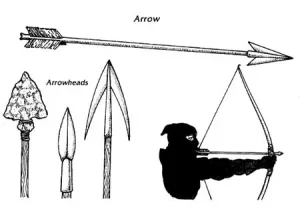
In the realms of Pathfinder 2e and Dungeons & Dragons, legendary artifacts are not just tools of immense power but also pivotal elements of history and storytelling. Each artifact holds a story, intertwined with the fates of heroes and villains who wielded them. Below, we explore several such legendary artifacts, detailing their origins, capabilities, and the quests that could lead adventurers to unearth these relics of power.
1. The Scepter of the Ancients (Pathfinder 2e)
The Scepter of the Ancients is a testament to the arcane prowess of the Azlanti, one of Golarion's earliest and most advanced civilizations. Imbued with the power to manipulate the very fabric of time and space, the scepter was a key instrument in the Azlanti's ascendancy to power, enabling its wielders to alter outcomes of significant historical events. After the fall of Azlant, the scepter's pieces were said to be scattered across the Starstone Isle, hidden within time-locked vaults that open only under rare astronomical alignments, making its recovery a quest for only the most determined or desperate.
Each piece of the Scepter harbors different temporal powers, such as speeding up time to heal wounds rapidly or slowing down enemies during battle. As adventurers collect and assemble more pieces, they can manipulate larger and more complex time phenomena. The quest for the Scepter of the Ancients is fraught with paradoxes and time loops, challenging adventurers to think in four dimensions. Successful manipulation of the Scepter's full powers could potentially allow a party to witness or alter key events in Golarion's past, presenting both tremendous opportunity and great risk.
History: This gilded scepter was once wielded by the ancient Azlanti mages. It is said to control the forces of time and space. Powers: The Scepter allows its bearer to manipulate time, granting abilities like temporal stasis, accelerated aging, or rewinding brief moments in time. Famous Wielders: Aroden, the Last of the First Humans, used it to ascend to godhood. Quests: Rumors say it was lost in the Mwangi Expanse, protected by a time-locked vault that only opens at the conjunction of three celestial bodies.
2. The Orb of Dragonkind (D&D)
The Orbs of Dragonkind encapsulate the essence of draconic power, each linked to a specific type of dragon. Created in the age of dragons as a means of controlling and commanding dragons, these orbs allow their users to exert powerful influence over dragonkind, communicating and bending dragons to their will. The orbs also enhance the user's understanding of draconic language and lore, further deepening the bond-or servitude-created between the wielder and these majestic creatures.
Legends tell that each orb was crafted by an ancient dragon sorcerer of corresponding type, who bound part of their soul and power into the orb as a measure of safeguarding their kin from external threats. Over centuries, these orbs have been the pivot of numerous conflicts, drawing adventurers and tyrants alike into quests for control over dragonkind. Possession of an Orb of Dragonkind is a double-edged sword, as it imbues great power but also marks the bearer as a target for dragon slayers and treasure hunters.
History: Each Orb of Dragonkind contains the essence and will of dragonkind, crafted by ancient draconic sorcerers to assert control over dragons. Powers: The orb grants its wielder the ability to dominate dragons, communicate with them, and boost their own magical powers with draconic energy. Famous Wielders: Kargoth the Betrayer, an infamous death knight, once used an Orb to raise a dragon army. Quests: Hidden in the ruins of Tharizdun's temple, recovering the Orb requires overcoming traps that test the seeker's wisdom and strength, as well as resisting the corrupting influence of the Orb itself.
3. Starstone (Pathfinder 2e)
The Starstone is one of Golarion's most mysterious and powerful artifacts, having catapulted several mortals into divinity. It crashed into the planet, forming the Inner Sea and the city of Absalom around its impact site. The Starstone's most unique feature is its ability to confer godhood on those who successfully complete its enigmatic Test, a challenge that adapts uniquely to each petitioner, making it one of the most personalized and perilous quests in the annals of Pathfinder.
The Test of the Starstone has been attempted by many, yet few have succeeded. The criteria remain unknown, as those who fail are never seen again, and those who succeed are reticent about their trials. Entering the Cathedral of the Starstone is easy, but surviving the divine trials within requires a rare combination of strength, wisdom, and perhaps a touch of divine favor. As such, the Starstone continues to inspire a mixture of awe, ambition, and fear across Golarion.
History: The Starstone is a celestial artifact that crashed into the world, creating the Starstone Isle and the city of Absalom. Powers: It offers godhood to those who can successfully navigate the treacherous Test of the Starstone. Famous Wielders: Gods like Cayden Cailean, who passed the Test on a dare, gained their divinity through the Starstone. Quests: The Test is not formalized; rather, it adapts to the challenger's nature, making it one of the most personalized and perilous quests in the Pathfinder universe.
4. The Hand and Eye of Vecna (D&D)
The Hand and Eye of Vecna are among the most malevolent artifacts in existence, remnants of the arch-lich Vecna, who ascended to godhood. The artifacts are sought after for their tremendous individual powers; the Hand grants almost unbeatable strength and deadly magical abilities, while the Eye offers the power to see into all matters, past and present, and to cast devastating spells. Together, they make their wielder nearly invincible but at the cost of gradual corruption and eventual total subjugation to Vecna's will.
The lore surrounding these relics is filled with tales of betrayal and bloodshed. They are typically found separated, guarded by deadly traps and dark enchantments, often drawing those with the ambition to rule or destroy worlds. Vecna's lingering essence in these artifacts means that using them is a perilous affair, as the lich-god's spirit can manipulate, or even possess, the wielder, bending them to his malevolent purposes.
History: These artifacts are all that remains of Vecna, a powerful lich who became a god of evil secrets. Powers: The Hand grants tremendous strength and deadly magic, while the Eye allows for seeing through all deceptions and casting spells that manipulate minds and perceptions. Famous Wielders: Kas the Betrayer, Vecna's lieutenant, famously used these artifacts against his master. Quests: The relics are said to be separated, hidden in places that are an anathema to Vecna, such as the vault of a god of truth or the tomb of a martyr who resisted Vecna's influence.
5. Axe of the Dwarvish Lords (Pathfinder 2e)
The Axe of the Dwarvish Lords is a symbol of unity and strength among the dwarves of Golarion. Forged by the god Torag, it was intended as a means to inspire and lead dwarves, imbued with divine magic that bolsters their natural resilience and prowess in battle. The axe also allows its wielder to manipulate stone and earth, create golems, and summon earth elementals, serving as a tool of leadership as much as a weapon of war.
Lost during a great conflict, the Axe of the Dwarvish Lords is believed to lie somewhere within the ancient Sky Citadel, now overrun by enemies of the dwarven people. The quest to reclaim the axe is not merely about recovering a legendary weapon but also about restoring a sense of unity and purpose to the fragmented dwarven clans of the Inner Sea region. It's a journey that tests the bonds of kinship and clan loyalty, and reawakening the ancient fortress's dormant powers could be key to the dwarves' resurgence as a unified force.
History: Forged by the dwarven god Torag, this axe was meant to symbolize the unity and strength of the dwarven people. Powers: It grants its wielder unmatched prowess in battle, the loyalty of dwarves, and control over earth and stone. Famous Wielders: King Targick the First, who united the dwarven clans under one banner. Quests: The Axe is believed to be lost in the Sky Citadel, now overrun by orcs. Recovering it would require rallying disparate dwarven clans and reclaiming the ancient fortress.
6. The Rod of Seven Parts (D&D)
The Rod of Seven Parts traces its origins back to the battles between law and chaos, crafted as a tool to maintain cosmic balance. This artifact, when fully assembled, can wield the power to alter reality to the wielder's vision of order or disorder. However, finding and joining all seven segments, each imbued with a different aspect and power of law and chaos, is a quest that spans the planes themselves.
Each part of the Rod is hidden in locations that represent the extremes of law and chaos, guarded by beings who epitomize these alignments. The quest for the Rod not only challenges the physical prowess of adventurers but also their moral and ethical boundaries. As they collect more pieces, the powers-and risks-of the Rod grow, culminating in the ability to avert or provoke a cosmic calamity, depending on how its wielder chooses to balance or dominate the forces of law and chaos.
History: This artifact, broken into seven fragments, originally belonged to a primordial wind deity. Each piece of the Rod of Seven Parts holds a different aspect of law and chaos, representing the cosmic balance. Powers: When assembled, the Rod grants its wielder immense power to enforce or disrupt cosmic order, including controlling weather, summoning allies, and casting powerful spells of creation or destruction. Famous Wielders: Mielliki, the Forest Queen, once used a fragment to restore balance in her realm. Quests: The pieces are scattered across the multiverse, hidden in places representing different aspects of cosmic law and chaos-such as the heart of a storm on the Elemental Plane of Air or deep within a labyrinth in the Abyss.
7. The Shield of Aroden (Pathfinder 2e)
The Shield of Aroden represents the height of divine protection, crafted for the god Aroden during his mortal campaigns against the forces of chaos. This legendary shield not only offers near-impervious defense against attacks but also has the power to rally celestial forces during times of great need. It is said to embody Aroden's hope for humanity and his ideals of valor and justice.
After Aroden's mysterious disappearance and presumed death, the Shield was lost to the ages. It is rumored to reside within the remnants of his sanctum on the Isle of Kortos, guarded by divine sentinels who test those who seek the Shield's power. The trials involve not only combat but also moral judgments, reflecting Aroden's values. Recovering the Shield would not only grant immense power but also symbolize the bearer's capacity for great good or evil, depending on their intentions.
History: This mighty shield was carried by Aroden, the god who raised the Starstone from the sea and founded the city of Absalom. Powers: It grants divine protection, able to deflect any blows and spells cast against its bearer, and can summon a legion of celestial beings in times of great need. Famous Wielders: Aroden himself, before his mysterious disappearance. Quests: The Shield is rumored to be hidden in the remnants of Aroden's sanctum on the Isle of Kortos, guarded by timeless guardians who test the worthiness of those who seek the shield.
8. Whispering Shrike (Pathfinder 2e)
Whispering Shrike is a katana of extraordinary finesse, intertwined with the spirit of a Tengu warrior. It grants its wielder swift strikes and stealth capabilities, reflecting the Tengu's mastery of swordplay and subterfuge. Moreover, the sword occasionally imparts visions or guidance from the Tengu spirit, offering insight or forewarning in critical moments.
Lost in the haunted forests of Ustalav, the Whispering Shrike awaits a worthy successor to continue its legacy. The quest to recover the katana involves unraveling the complex history of Tengu warriors in the region, and overcoming a series of challenges that test the seeker's resolve and mastery of the blade. The forest itself, alive with spirits and secrets, serves as both adversary and ally, as it seeks to judge the worthiness of those who dare to claim the Whispering Shrike.
History: This slender katana was forged by a master smith in Tian Xia, imbued with the spirit of a fallen Tengu warrior. Powers: It grants its wielder unmatched speed and stealth, the ability to speak with birds, and occasionally, visions from the spirit within that offer guidance or warnings. Famous Wielders: Amaya Shadowfeather, a legendary Tengu rogue who used it to defend her people. Quests: Last seen in the haunted forests of Ustalav, retrieving the Whispering Shrike involves solving riddles and overcoming challenges set by the spirits of the forest.
9. Book of Vile Darkness (D&D)
The Book of Vile Darkness is a compendium of evil, gathered across millennia and bound within pages that corrupt nearly all who read them. The book offers power at a terrible price: spells and rituals capable of immense destruction or control, but each use drives the reader closer to utter corruption and evil. It is a potent tool for those seeking to ascend through dark magic, yet it is a perilous path that few can walk without losing themselves.
The Book's whereabouts are as fleeting as the shadows it casts; it appears when and where its malevolent influence can spread most effectively. Recovering the Book often involves deciphering dark prophecies and surviving encounters with the worst of humanity and demonkind alike. For those bold enough to wield it, the Book of Vile Darkness offers unparalleled power, but it also tests the wielder's will against the darkest corners of their soul.
History: Compiled over eons by evil beings, this book contains forbidden knowledge, dark rituals, and spells that tap into the deepest wells of black magic. Powers: Readers can gain immense dark powers at great cost, including necromantic spells and rituals that can alter the very fabric of reality. Famous Wielders: Vecna, who added several chapters to the book. Quests: The Book periodically vanishes from the world, only to reappear in a place of great evil. Recovering it not only requires braving such locations but also resisting or overcoming the corrupting influence of the book.
10. Crown of Fangs (Pathfinder 2e)
The Crown of Fangs is steeped in tales of treachery and tyranny, crafted for a queen known for her ruthless rule over Korvosa. The crown grants its wearer not only rule over serpentine creatures but also significant enhancements to their abilities in enchantment and illusion magic, making it a powerful asset for any ruler or spellcaster. However, its legacy is one of blood and betrayal, as it seems to imbue its wearers with a drive towards harsh, tyrannical rule.
Recovering the Crown involves delving into the swamps of the Mushfens, a treacherous journey through territories filled with dangerous creatures and natural hazards. The crown's influence lingers, corrupting the area and its inhabitants, making the quest not just a physical challenge but a battle against the creeping influence of the crown's past. Unraveling the mysteries of this artifact offers a chance to cleanse its legacy or perhaps succumb to its power.
History: Forged for a long-dead monarch known for her ruthlessness and sorcery, this crown grants its wearer dominion over snakes and serpentine creatures. Powers: The Crown of Fangs enhances its wearer's magical abilities, particularly in enchantment and illusion, and can control or summon serpents. Famous Wielders: Queen Illeosa of Korvosa, who used it to maintain her grip on the city. Quests: After her fall, the crown was reportedly lost in the depths of the Mushfens, guarded by the very creatures it controls. Retrieving it means navigating the treacherous swamps and solving ancient puzzles left by the queen's loyal servants.
Each of these artifacts offers not just power but a gateway into the rich histories and mythologies of their respective universes. The quests to recover them are epic adventures that can define the careers of those bold enough to undertake them, providing endless opportunities for heroic tales and legendary exploits in both the Pathfinder 2e and D&D campaigns.






